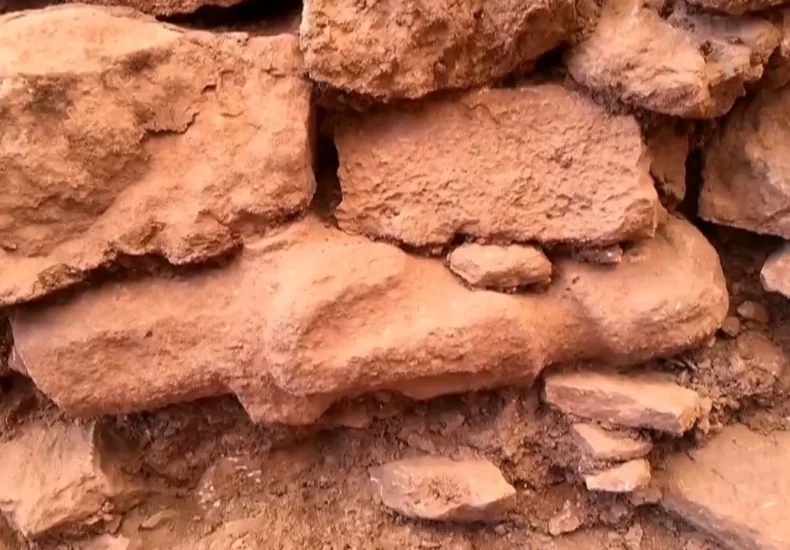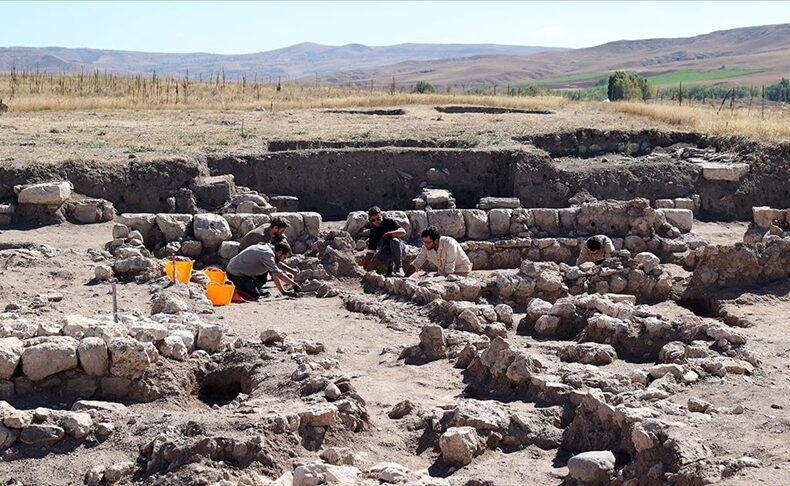
2,200-Year-Old Pantry and Kitchen Unearthed in Ancient City of Timbriada, Türkiye
Archaeologists excavating the ancient city of Timbriada in Isparta’s Aksu district have uncovered a pantry and kitchen complex dating back 2,200 years. The discovery, located near the city’s church, sheds light on food storage, agricultural practices, and religious life during Late Antiquity. The excavation of the Timbriada Ancient City, founded on the slopes of Asartepe

Lost Temple Unearthed in Amasya: Built from Volcanic Rock, Absent from Ancient Records
Archaeologists in Türkiye have uncovered a mysterious 2,600-year-old temple at Oluz Höyük in Amasya—one that is absent even from the writings of ancient historians such as Herodotus and Strabo. The discovery sheds new light on Central Anatolia’s religious landscape during the Iron Age. Excavations, led for 19 years by Prof. Dr. Şevket Dönmez of Istanbul

Shocking Finds in the Lydian Kitchen: New Hearths, Fish Bones, and Evidence of Dog Consumption at Daskyleion
On the shores of Lake Manyas in northwestern Türkiye, the ancient city of Daskyleion has revealed fresh insights into the daily life of its inhabitants. Archaeologists excavating the so-called “Lydian kitchen” uncovered two additional hearths, alongside seeds, fish bones, and animal remains. Among the discoveries were dog bones bearing cut marks, strengthening the argument that

12,000-Year-Old Human Statue Unearthed at Göbekli Tepe
Turkish Minister of Culture and Tourism Mehmet Nuri Ersoy has announced the discovery of a human statue embedded in a wall at Göbekli Tepe, the world’s oldest known temple complex in southeastern Türkiye. The artifact, believed to have been placed as a votive offering, is expected to provide groundbreaking insights into Neolithic rituals and belief

Gifted Burials Unearthed at İkiztepe Mound: An Avenger and a 6-Year-Old Child
Two remarkable “gifted burials” have been uncovered during this year’s excavations at the İkiztepe Mound in Bafra, Samsun. The discoveries shed new light on the burial traditions and social structures of Early Bronze Age communities in northern Anatolia. An Avenger Buried with Harpoons and a Child with Bracelets According to excavation director Assoc. Prof. Aslıhan

The 2,700-Year-Old Siloam Inscription: Israel’s Repatriation Request from Türkiye
The Siloam Inscription, dating back nearly 2,700 years, is considered one of the earliest known examples of Hebrew writing. Discovered near Jerusalem in 1880—then under Ottoman rule—the inscription was transferred to the Imperial Museum (today’s Istanbul Archaeology Museums), where it has been preserved ever since. While Israel has repeatedly requested its return, Turkish law classifies

Archaeologists Discover Hittite Bird Divination Tablets and Royal Seals in the Ancient City of Samuha
Archaeologists working at the Hittite settlement of Kayalıpınar, known in antiquity as Samuha, have uncovered an extraordinary state archive containing 56 cuneiform tablets on bird divination and 22 seal impressions belonging to kings, princes, princesses, priests, and high-ranking officials of the Hittite Empire. The excavation was led by Assoc. Prof. Dr. Çiğdem Maner of Koç

Ancient Shops Unearthed in Antioch Reveal Trade and Pilgrimage in Early Christianity
Rescue excavations in the ancient city of Antioch (Antiocheia), in modern Hatay, Türkiye, are shedding new light on the city’s economic and religious life during the 4th and 5th centuries CE. Recent discoveries near the world-famous St. Peter’s Church demonstrate that the site was not only a spiritual center for early Christian pilgrims but also

A 5,000-Year-Old Pottery Fragment With a Human Face was Discovered in Konya
Archaeologists excavating Gökhöyük, near Seydişehir in Türkiye’s Konya province, have uncovered a pottery fragment dating back about 5,000 years. What makes the find remarkable is the depiction of a human face carved onto its surface—a rare ritual object rather than an ordinary household vessel. A Settlement Spanning 7,000 Years Gökhöyük, first identified in the 1950s

Bronze Age Idols Unearthed in Western Türkiye: 4,500-Year-Old Ritual Treasures Found at Tavşanlı Höyük
Archaeologists have uncovered a remarkable collection of 4,500-year-old human-shaped idols at Tavşanlı Höyük, one of the largest Bronze Age settlements in Western Anatolia. The discovery, announced by Culture and Tourism Minister Mehmet Nuri Ersoy, includes marble, bone, and terracotta figures that provide unprecedented insights into the spiritual and domestic life of the Early Bronze Age.
